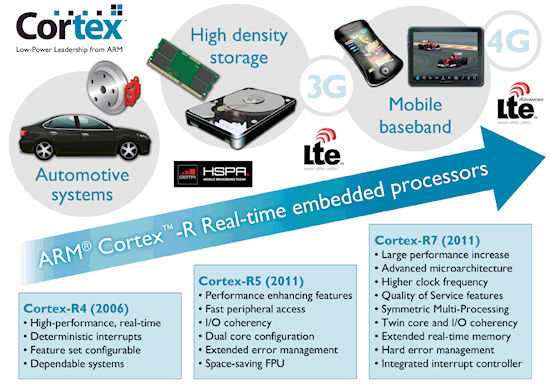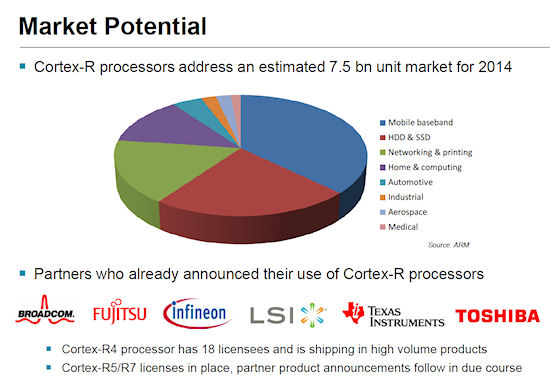Keeping it real
Most of us know the difference between the BlackBerry Torch and the HTC Desire, iOS and WP7, even Snapdragon and Tegra, but once you get into mobile network technology and infrastructure it all gets rather more arcane.
With UK low-power chip designer ARM, we tend to focus on the Cortex A family as application processors are, for want of a better term, the sexy end of its offering. The next rung down in size and complexity, in the A-R-M nomenclature, is the Cortex R family.
Today ARM launched the Cortex R5 and R7, and to find out why you should care, we spoke to Richard York - director of product marketing - and Andrew Frame - CPU product manager at ARM.
Frame started by explaining that the Cortex R designs can function as ‘baseband processors', which sit between the modem and the application processor. "It's the engine that provides the application processor with raw data," he said.
As you can imagine, there's all sorts of digital noise constantly being downloaded by a given mobile device, including raw data and network information. This needs to be received, processed, and converted into the right form for the application processor. So the baseband processor is a critical bottle-neck in the process of receiving mobile data and, if it doesn't perform, it doesn't matter how fast the network or the application processor are.
The good news is that the baseband processor market is pretty standardised, for the simple reason that ARM designs all of them. "In pretty much all smartphones, we're not aware of any non-ARM baseband processors," said York.
As you can see from the first slide below, it's not just baseband processors that ARM's Cortex R family is used in, but other environments that require that kind of ‘realtime' processing, such as printers, disk drives and cars. The second slide gives you ARM's breakdown of the TAM for Cortex R chips.











